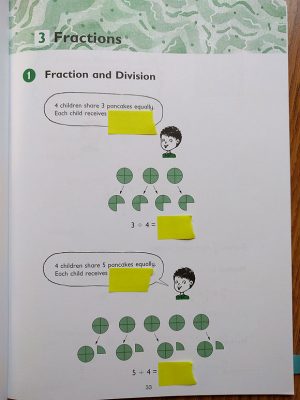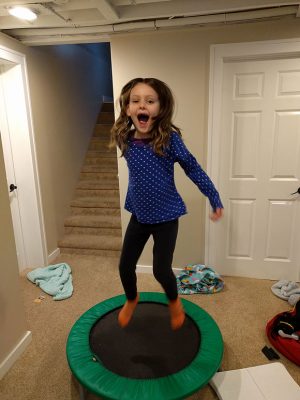
I always feel pulled in two different directions in February.
One on hand, the Fun Mom in me wants to live large. She wants to shake up the daily routine, toss out the boring old schoolbooks, and spend February setting the kids’ enthusiasm afire with fascinating hands-on projects from Pinterest.
But on the other hand, the Responsible Mom in me would really like to get the math book done by the end of May. (And she’s not so sure she can pull off that watermelon clipper ship.)
Fortunately, you can be the Fun Mom and still make progress in the math book with these eight ways to shake up your math routine.
Make math personal
Word problems can be very dull.
Johnny had 14 coconuts and Sally had 17…
Yawn. But word problems come to life when they’re about people your child actually knows. Just cross out the names on the worksheets and pencil in your friends and family members.
It’s even more fun if you put people from different contexts into the same word problem. Why not have your child’s best friend split the pizza with your grumpy next-door neighbor? Or have Aunt Mary divide the marbles with your family pet? Just a little silliness can make word problems a lot more fun—and help prevent word problem panic, too.
Add some suspense
You know how hard it is to put down a good mystery novel? Reading the math textbook becomes much more interesting when there’s little mysteries to solve, too. Use small sticky notes to cover parts of the examples in your child’s math book. My daughter loves figuring out what’s under the sticky note—then taking it off and seeing whether she’s right! (Bonus: she pays much closer attention, too.)

Tear up the worksheet
Literally. Tear up the worksheet (or cut it with scissors if you’re civilized like that) so that each problem is on its own piece of paper. Toss the pieces in a bowl. Then, have your child pull out one slip of paper at a time and solve the problem on it. This keeps long worksheets from feeling overwhelming. And, if your child likes puzzles, he can take all the slips and try to put them together at the end.
Ready, set, go
Some kids hate time pressure, but others thrive on it. If your child tends to dawdle through drill pages, set a timer and challenge your child to finish the page before the timer goes off. To give my kids a feeling of success, I try to set the timer for at least a minute longer than I think they’ll need. Then, if they beat the clock, I write their time at the top of the page to celebrate. (Ok, it’s not a very exciting celebration, but it seems to make them happy!) This works best for pages of simple calculations (like addition facts) that can be completed in less than 5 minutes—not complex problems where you want to encourage your kids to slow down and think.
Get moving
With so little time to run around outside in winter, we all get a little stir crazy. Movement makes oral drill more fun, and gives your kids a chance to get some energy out, too. Have them bounce on a mini trampoline while you call out addition facts or have them do jumping jacks in rhythm to the multiplication table. Anything that can be recited rhythmically is especially good for this.

Hands-on measurement
Kids love to use real measuring tools. My son and daughter always look forward to measurement chapters in their textbooks, because they know they’ll get to weigh things on the kitchen scale, slosh water around with measuring cups, and pull out the meterstick and measuring tape. Your measuring lessons don’t have to be anything fancy. Just demonstrate how to use the tools and then make up little challenges:
- Can you find something that’s about 30 inches long?
- Which container will hold the most water?
- How much do you think this stack of books will weigh?
Make it a game
If your child (or you!) needs a break from worksheets, try making the math content into a game instead. Games not only make it fun to practice math, but they also allow you to monitor your child’s progress and correct any mistakes immediately. As a starting place, check out this list of math games from my website. The classic card game War can also be adapted to practice everything from simple addition to fractions.
Read some math
Another way to add some fun to your math time is to read related math picture books. There are some wonderful lists of living math books online, but I’ve found it’s often easiest to simply type the subject I’m looking for into my library’s online catalog and see what they have.
Be warned—there are a lot of boring math picture books out there! If a book feels too much like a textbook, it’s probably not worth reading. Many of my favorites are from the MathStart series, because they combine solid math content with an actual plot.
Changing up your math routine doesn’t have to mean burning all the workbooks or tap-dancing your way through fractions. With just these few tweaks, you can be your Fun Mom self in February—and pat your Responsible Mom self on the back at the same time.
- Quiz: Is It Time for a New Math Curriculum? - April 20, 2017
- How to Make Your Math Lessons More Powerful (Without Extra Work) - March 18, 2017
- 8 Ways to Make Math Fun - February 22, 2017
